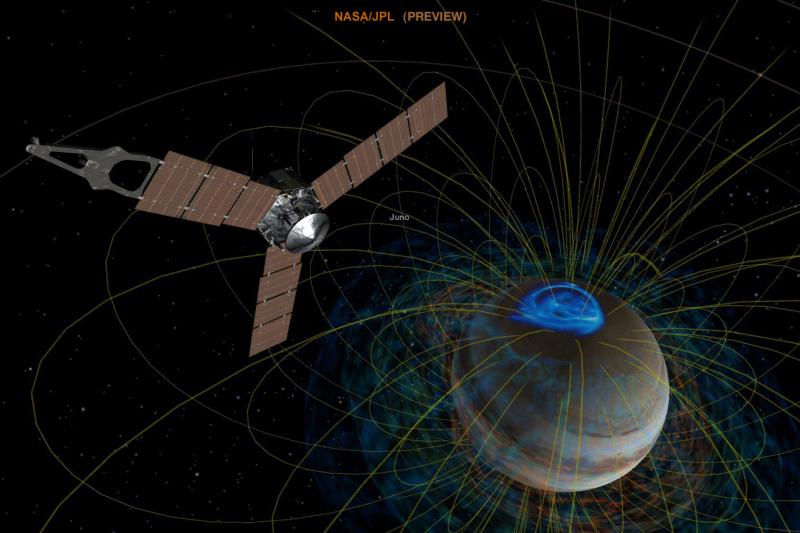2016 July 5
Juno is in orbit!
NASA’s Juno spacecraft has gone into orbit around Jupiter this morning (July 5), exactly as planned. Soon the exciting science can begin.
As Juno’s scientific instruments had to be switched off for several days before Jupiter orbital insertion, we will not see much until its highly elliptical orbit brings it back for its first perijove [closest approach to Jupiter], on August 27. Then, the spacecraft will swoop just 4147 km above the cloud-tops, and all the instruments will be tested. In the days following, we can hope to see remarkable views of the polar aurorae in ultraviolet and infrared wavelengths, as well as close-up views of the clouds from the scanning camera (JunoCam).
The next perijove will be on Oct.19: as today, most scientific instruments will be turned off, and the main engine will be fired again to reduce the orbital period to exactly 14 days.
The perijove on Nov.2 will be an opportunity for final adjustment of the orbit and fine-tuning the instruments; then regular operations will proceed from Nov.16 onwards.
Although Juno should produce some impressive pictures (especially of the aurorae), the main products of the mission will not be visual. The main aims of its low-altitude passes are to map the gravitational and magnetic fields in great detail, and to probe the atmosphere below the clouds by measuring thermal microwave emission. It will take months or even years for these results to be fully analysed, but they should give us a new understanding of what Jupiter is like inside.
Links:
https://www.missionjuno.swri.edu/
http://www.jpl.nasa.gov/news/news.php?feature=6558

| The British Astronomical Association supports amateur astronomers around the UK and the rest of the world. Find out more about the BAA or join us. |
